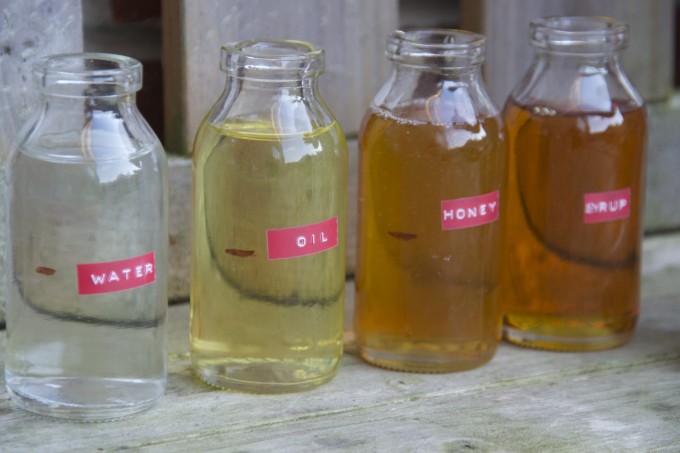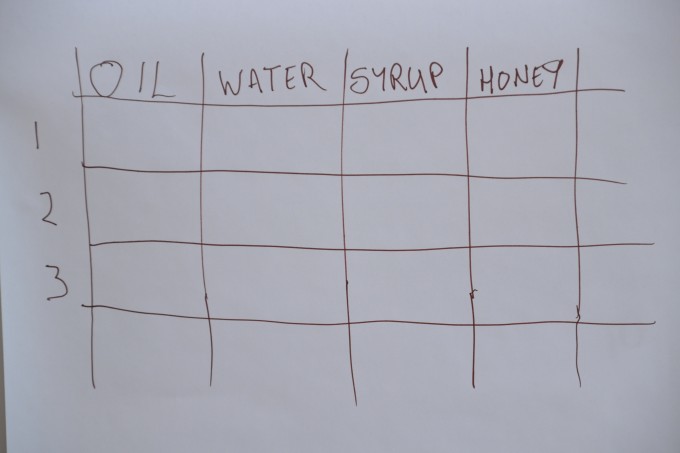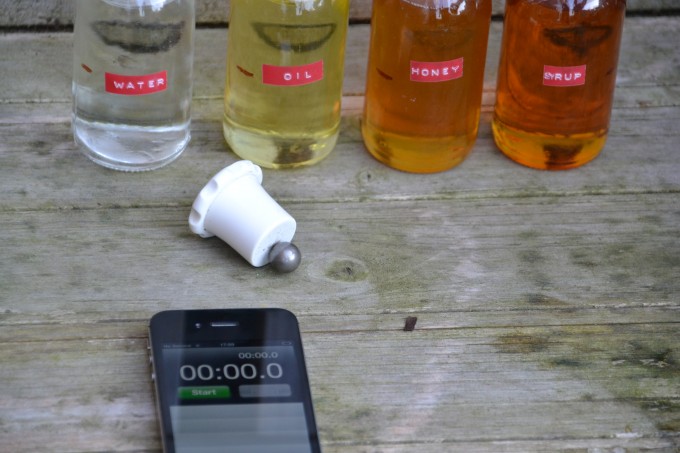What do you put on your porridge?
We noticed that sometimes our honey and golden syrup take a long time to pour, whereas water and milk pour almost too fast.
We’ve done viscosity experiments before by letting the liquids flow down an inclined board.
In this viscosity experiment, we attempted to refine the procedure by comparing fluids by dropping a marble through them. This is also a great opportunity to practice drawing and using tables, as well as making predictions beforehand.
You’ll need
1. Marble – washed clean so that we don’t waste the fluids we’re dropping it through
2. A selection of fluids of differing “thickness”. We used:
Honey
Water
Golden Syrup
Oil
3. A container tall enough to measure the time the marble passes between two points
4. A stopwatch
5. A spoon to retrieve the marble.
Method
Fill one container with the fluid under investigation. Make two marks on the container to use as markers.
As you fill the containers watch how easily the liquid pours. Can you use this information to make predications about how viscous each one is?
Take the clean marble and drop it in the liquid. Observe how long it takes to fall between the lines. Do a couple of practice runs just to get a feel for how long the marble takes.
Make a table on a piece of paper (or on a board) to record your results with a column for each fluid and space underneath to write the times the marbles take.
- To make your observations, simply drop the marble into the fluid and using the stopwatch, try to time the marble as it crosses each of the marks (i.e. start the watch as it passes the first line and stop it as it passes the second line). After each drop, retrieve the marble and clean and dry it ready for the next run. Do the marble drop three times for each fluid. *note, we used a magnet to retrieve the marble*
The faster times should correspond to the least viscous liquids.
Do your results match your expectations?
Last Updated on October 9, 2023 by Emma Vanstone




explore and compare the viscosity of various liquids